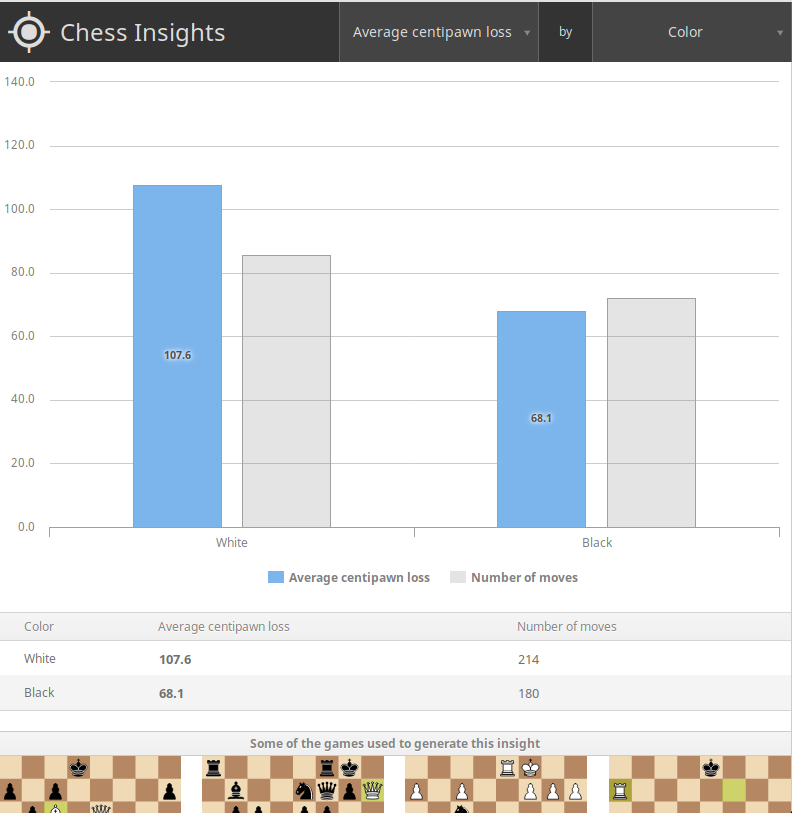Centipawn
The centipawn is the unit of measure used in chess as measure of the advantage. A centipawn is equal to 1/100 of a pawn. Therefore 100 centipawns = 1 pawn. These values play no formal role in the game but are useful to players, and essentials in computer chess, in order to evaluate positions. The pieces have usually an integer value in pawns, but using the centipawn allows strategic features of the position, worth less than a single pawn, to be evaluated without requiring fractions.
Standard Valuation
The following is the most common assignment of point values:
:The queen is worth 900 :Each rook is worth 500; :Each knight is worth 300; :Each bishop is worth 300; :Each pawn is worth 100 centipawns.
The value of the king is undefined as it cannot be captured, let alone traded, during the course of the game. Some early computer chess programs gave the king an arbitrary large value (such as 100,000,000 centipawns) to indicate that the inevitable loss of the king due to checkmate trumps all other considerations. In the endgame, when there is little danger of checkmate, the fighting value of the king is about four pawns. The king is good at attacking and defending nearby pieces and pawns. It is better at defending such pieces than the knight is, and it is better at attacking them than the bishop is.
